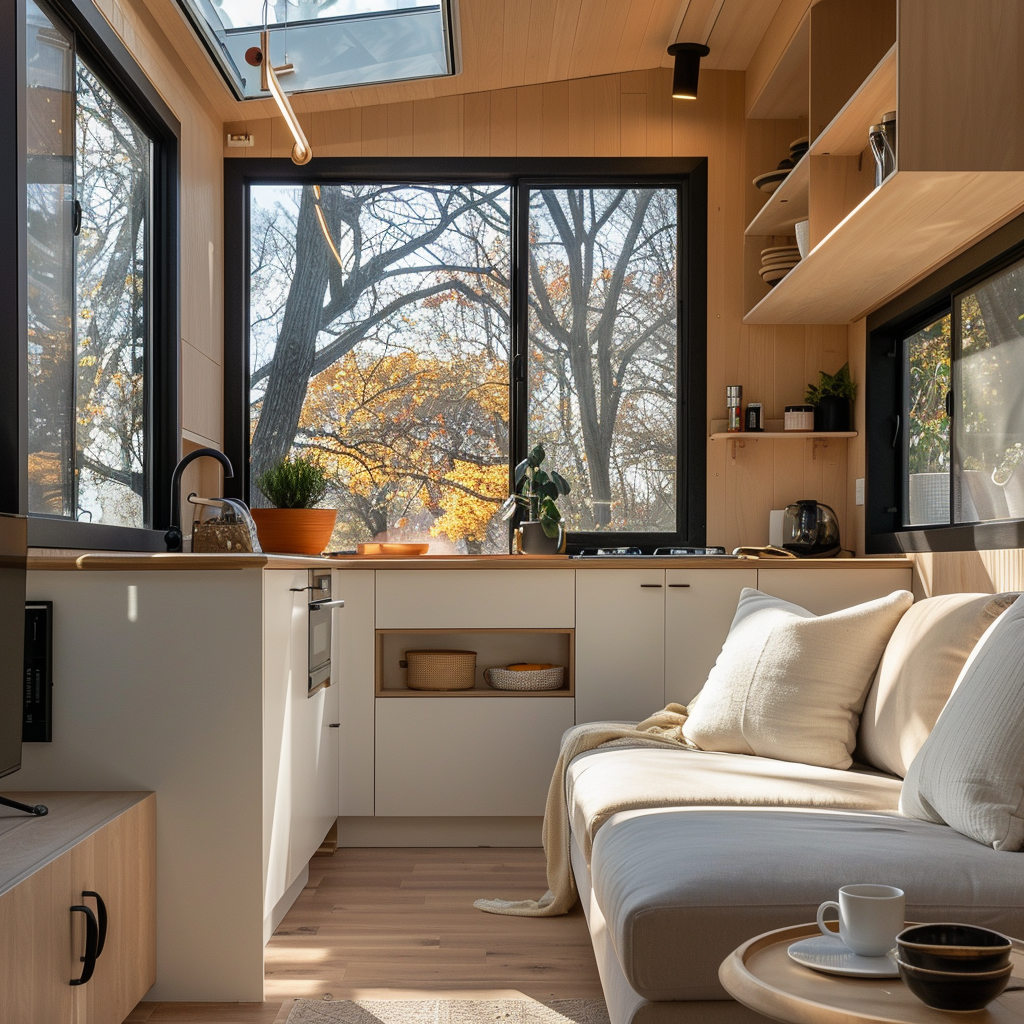In recent years, the tiny home movement has gained popularity as an affordable, minimalist way to live. Whether you’re looking to downsize, save on housing costs, or embrace a more sustainable lifestyle, tiny homes offer a unique alternative to traditional housing. But while the idea of living in a small, cozy space is appealing, it’s not without its challenges. In this guide, we’ll explore the pros and cons of tiny home living to help you decide if it’s the right fit for your lifestyle.
1. The Pros of Tiny Home Living
Tiny homes offer numerous benefits that go beyond just saving space. Here are some of the top reasons why people are embracing the tiny home lifestyle:
a. Affordability
One of the biggest draws of tiny homes is their affordability. Traditional homes can cost hundreds of thousands of dollars, but a tiny home can be built or purchased for a fraction of the price. Many tiny homes cost between $20,000 and $100,000, making homeownership much more accessible, especially for first-time buyers or those looking to reduce debt.
Unique Insight: Lower housing costs mean you can allocate more money toward experiences, travel, or savings—perfect for those wanting to live more freely without the weight of a large mortgage.
Actionable Tip: Before diving into tiny home living, create a budget to compare the long-term costs of owning a tiny home versus renting or buying a traditional home.
b. Sustainability
Tiny homes have a significantly smaller environmental footprint. With less space to heat, cool, and furnish, tiny homeowners use fewer resources overall. Many tiny homes also incorporate eco-friendly features like solar panels, composting toilets, and energy-efficient appliances.
Actionable Tip: If sustainability is important to you, look for ways to make your tiny home even more eco-friendly. Opt for reclaimed materials, rainwater collection systems, or energy-efficient appliances to reduce your carbon footprint.
c. Simplified Living
Living in a tiny home encourages a minimalist lifestyle. With limited space, you’re forced to prioritize what you truly need, which can lead to less clutter and more mental clarity. Many tiny homeowners find joy in owning fewer possessions and focusing on meaningful experiences rather than accumulating material goods.
Actionable Tip: Start decluttering well before you make the move. This will help you adapt to a smaller space and ensure that only essential or meaningful items make the cut.
2. The Cons of Tiny Home Living
While the benefits of tiny homes are attractive, they’re not without drawbacks. It’s important to understand the challenges before making such a significant lifestyle change.
a. Limited Space
The most obvious downside to tiny home living is the lack of space. While it’s a great solution for those who enjoy minimalism, adjusting to such a small area can be difficult, especially for families or those who enjoy hosting guests. Storage can be a major challenge, and you’ll need to get creative with multi-functional furniture and smart design solutions.
Unique Insight: Tiny homes typically range between 100 and 400 square feet, so think about your daily routines and how they’ll fit into such a small space.
Actionable Tip: Measure your current living space and try downsizing in stages. Gradually reducing the space you use can help you ease into tiny living.
b. Zoning and Legal Restrictions
Tiny homes can sometimes face legal hurdles. Zoning laws, building codes, and regulations vary from place to place, and some areas may not allow tiny homes on certain properties. You’ll need to do thorough research to ensure your tiny home complies with local laws.
Actionable Tip: Check with local municipalities before purchasing or building a tiny home. You may also want to explore tiny home communities, where the laws are more accommodating.
c. Limited Privacy
If you’re living in a tiny home with a partner or family, privacy can be a challenge. With limited space, finding time alone or a quiet place to work can be difficult. For those who thrive on personal space or work remotely, this can become a significant issue over time.
Actionable Tip: Design your tiny home with privacy in mind. Use partitions, loft spaces, or outdoor living areas to create a sense of separation and give yourself room to breathe.
3. Is Tiny Home Living Right for You?
Deciding whether tiny home living is right for you comes down to your personal preferences, lifestyle, and financial situation. Here are a few questions to ask yourself:
-
Do you enjoy minimalism and the idea of downsizing? Tiny home living requires a commitment to a simpler lifestyle. If you enjoy a minimalist approach and don’t mind giving up some conveniences, this lifestyle may suit you.
-
Are you ready for a more sustainable way of life? Tiny homes offer a fantastic opportunity to live sustainably. If reducing your carbon footprint is a priority, this could be a motivating factor.
-
Can you handle the legal and zoning challenges? Not all areas are tiny-home-friendly. You’ll need to be flexible and willing to research where you can park or build your home legally.
Conclusion: Tiny Home Living—A Lifestyle Choice
Tiny home living offers an exciting, affordable, and sustainable way of life, but it’s not without its challenges. Understanding the pros and cons will help you decide if this lifestyle aligns with your goals and needs. If you’re looking to simplify, reduce costs, and embrace sustainability, tiny homes could be the perfect solution for you.












